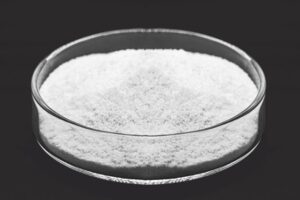
Common emulsifiers
Lecithin as an emulsifier
Lecithin is a natural emulsifier that is commonly used in food processing. It is derived from plant and animal sources, including soybeans, eggs, and sunflowers. Lecithin is used to create stable emulsions in a variety of food products, including chocolate, baked goods, and salad dressings. It works by reducing the surface tension between oil and water, allowing them to mix more easily and remain blended over time. Lecithin is a versatile and effective emulsifier that is commonly used in the food industry.
DATEM emulsifier
Diacetyl Tartaric Acid Esters of Monoglycerides (DATEM) is a synthetic emulsifier commonly used in food processing. It is derived from soybean oil and is used to create stable emulsions in a variety of products, including bread, baked goods, and margarine. DATEM works by reducing the surface tension between oil and water, allowing them to mix more easily and remain blended over time. It is an effective and versatile emulsifier that is widely used in the food industry.
PGE emulsifier
Polyglycerol Esters of Fatty Acids (PGE) is a synthetic emulsifier commonly used in food processing. It is made by esterifying glycerol with fatty acids, typically from vegetable oils. PGE is used to create stable emulsions in a variety of products, including bakery goods, margarine, and ice cream. It works by reducing the surface tension between oil and water, allowing them to mix more easily and remain blended over time. PGE is an effective and widely used emulsifier in the food industry.
Sorbitan ester as an emulsifier
Sorbitan esters are a group of synthetic emulsifiers commonly used in food processing. They are made by esterifying sorbitol, a sugar alcohol, with fatty acids typically derived from vegetable oils. Sorbitan esters are used to create stable emulsions in a variety of products, including chocolate, baked goods, and ice cream. They work by reducing the surface tension between oil and water, allowing them to mix more easily and remain blended over time. Sorbitan esters are a versatile and effective emulsifier that is widely used in the food industry.








